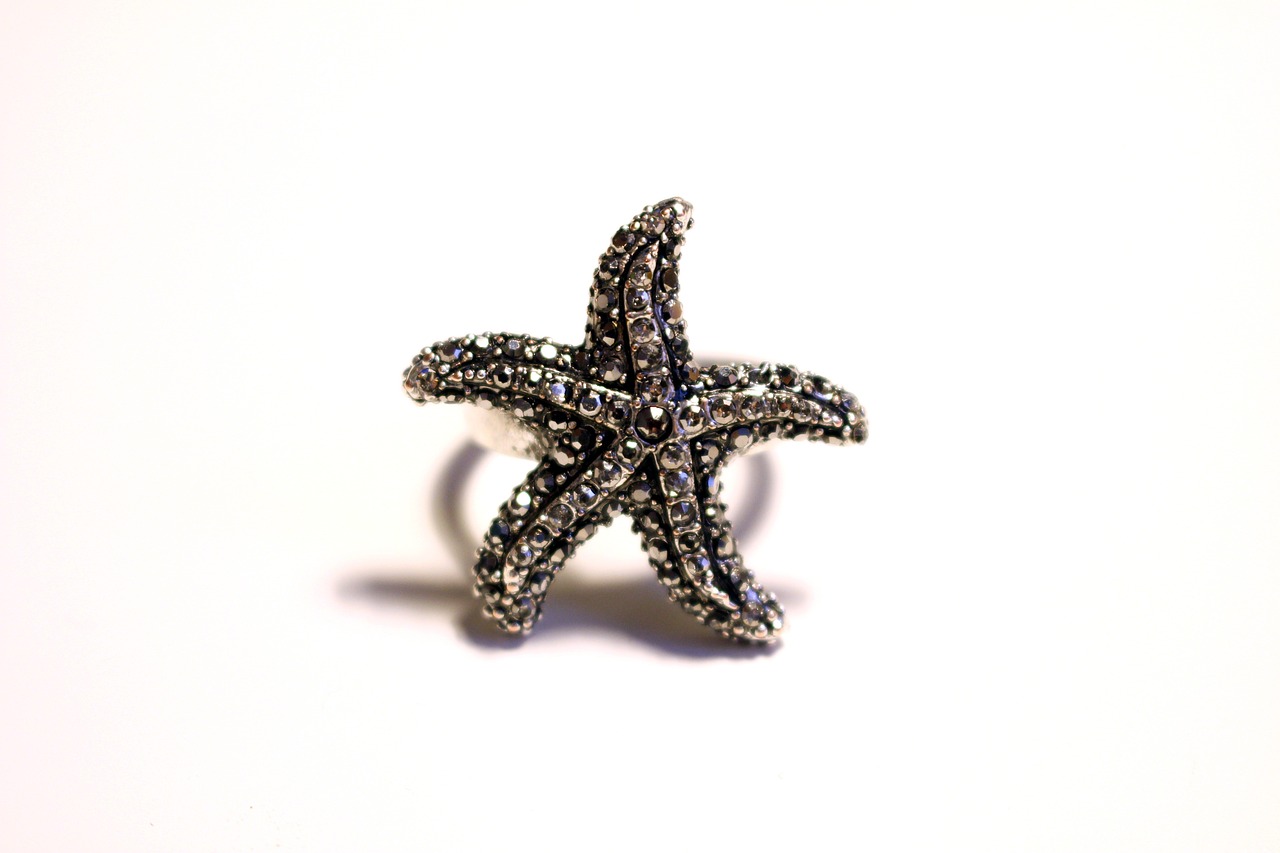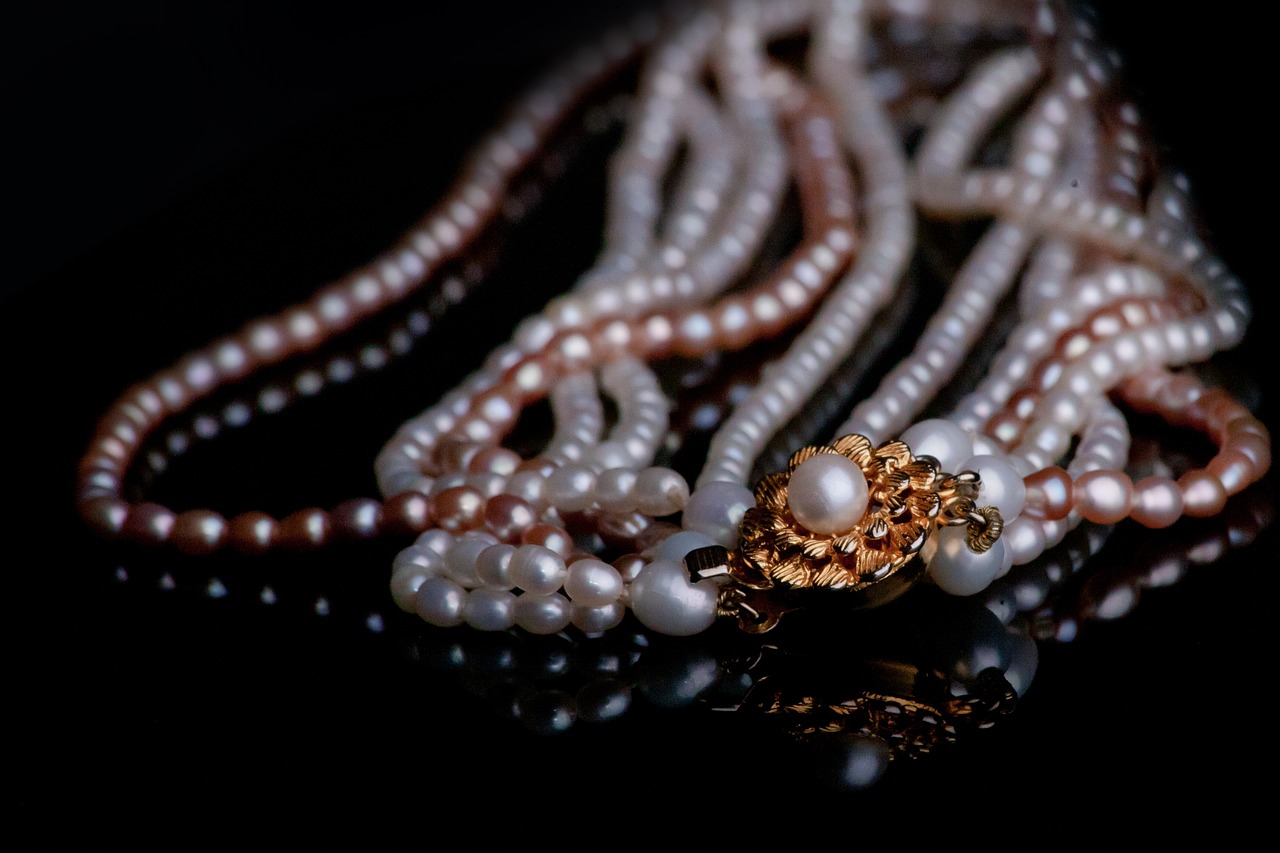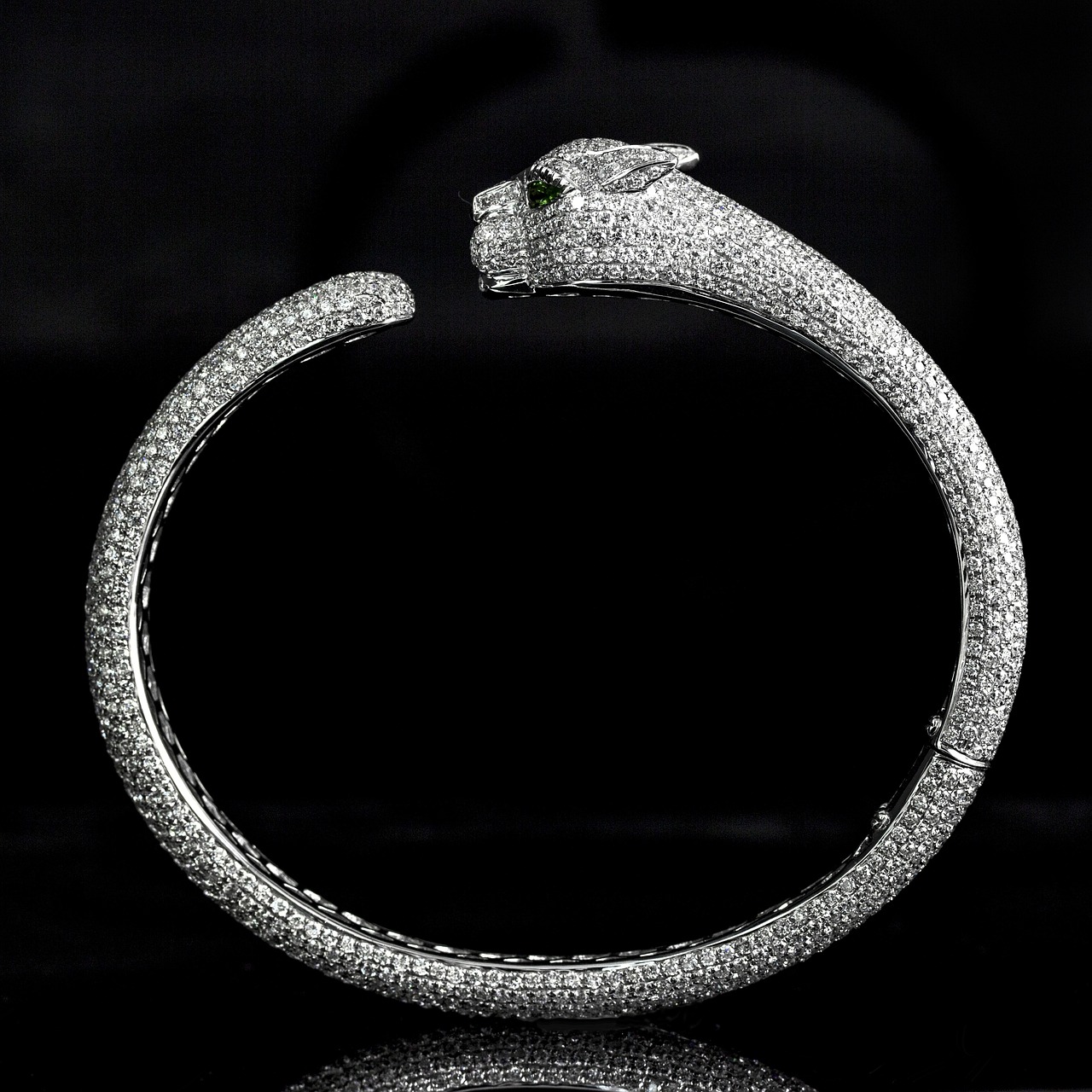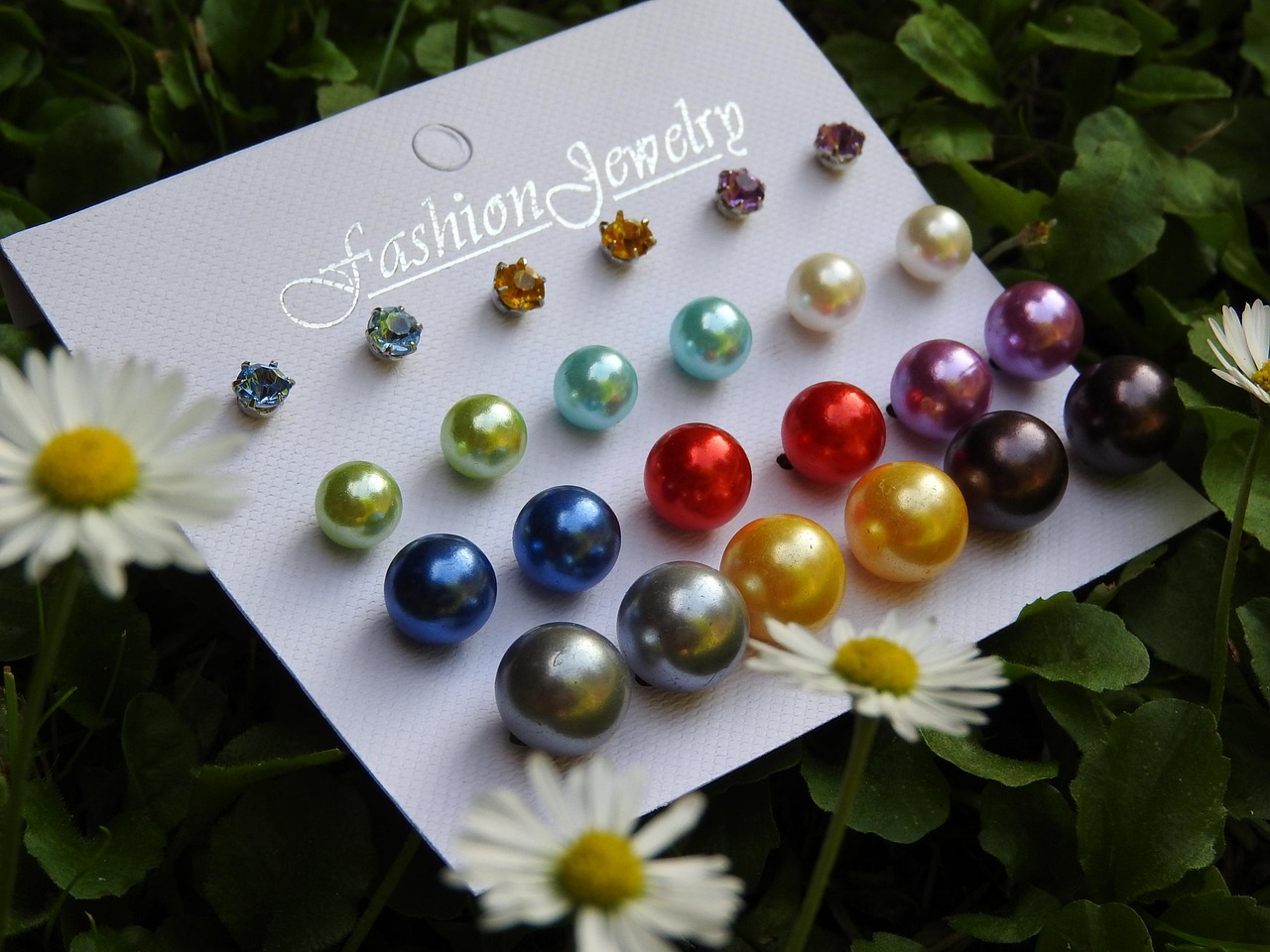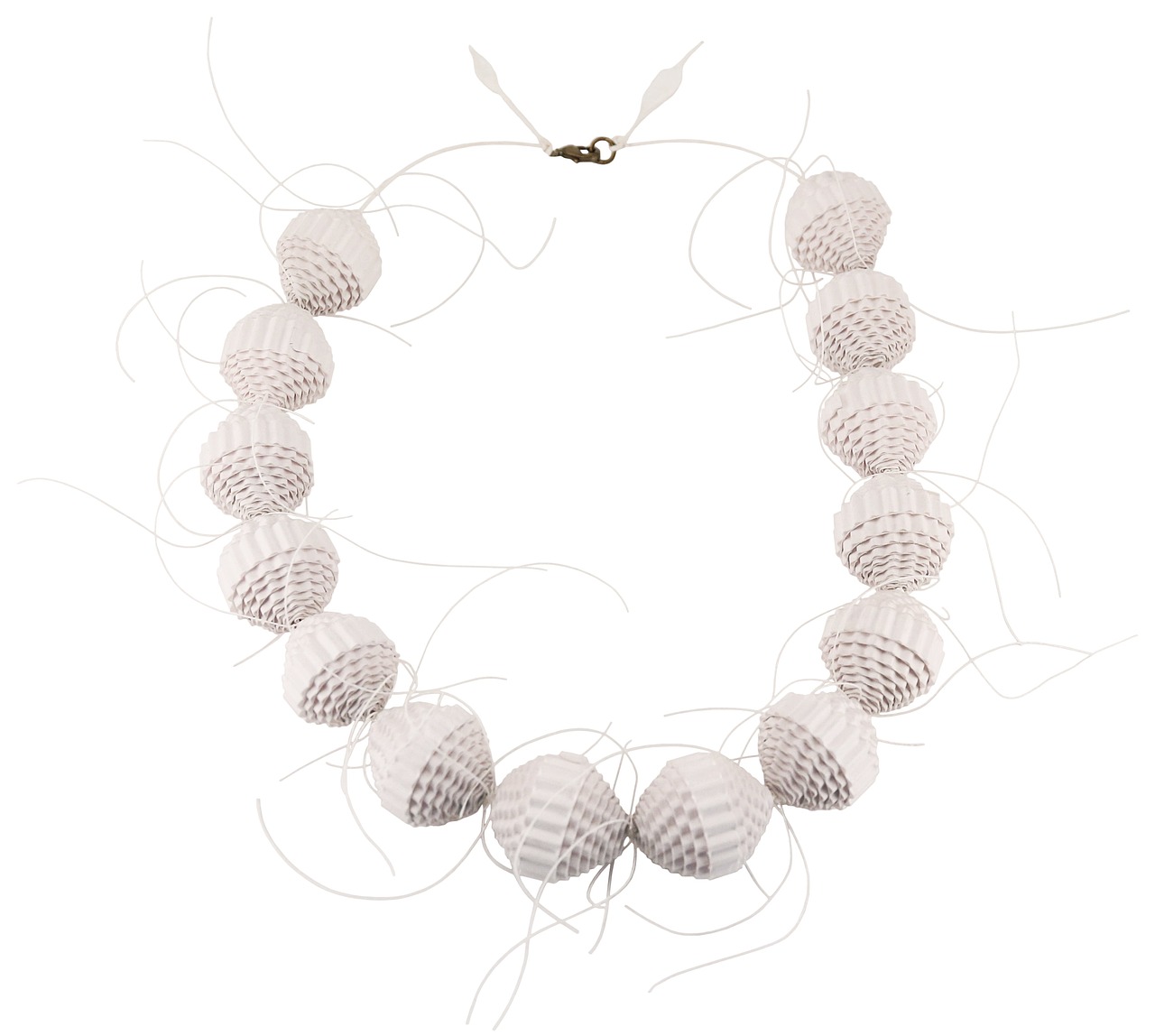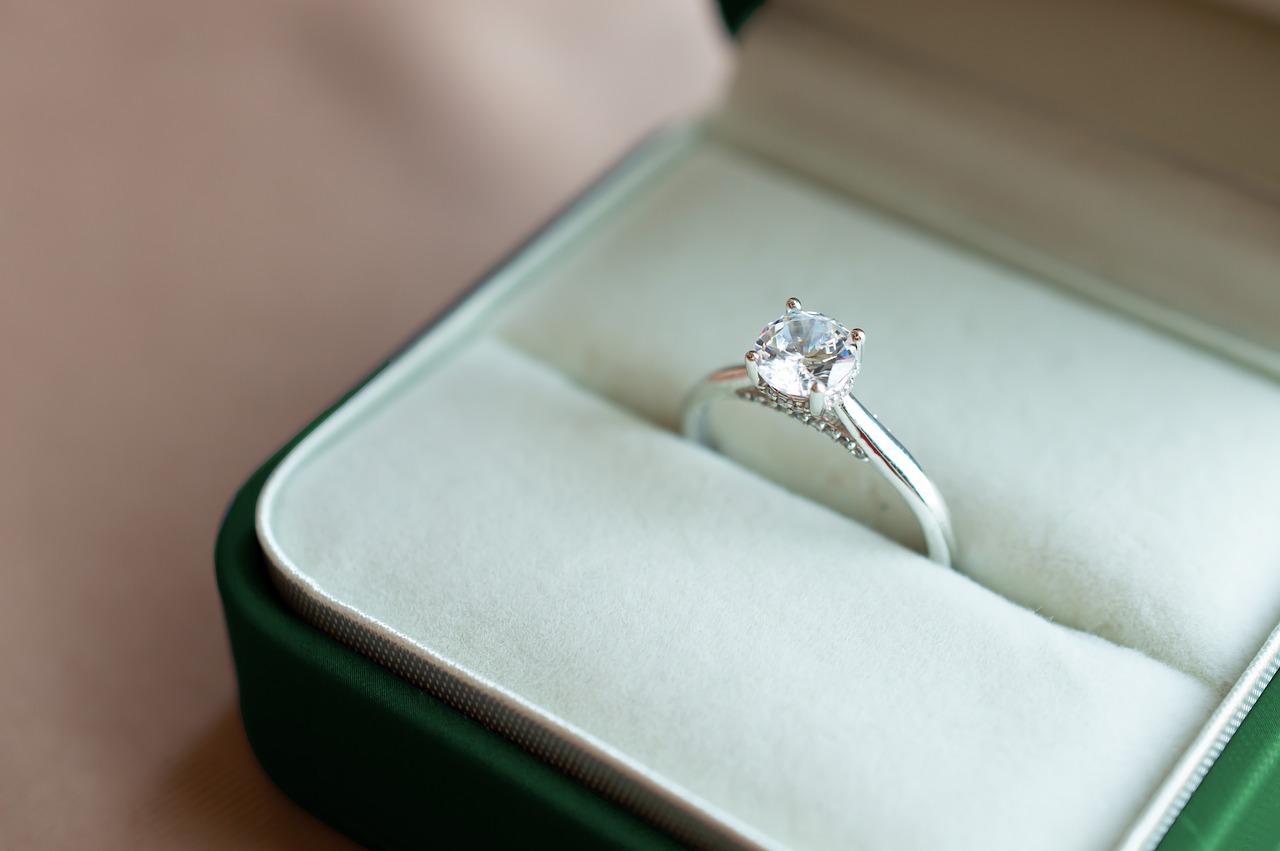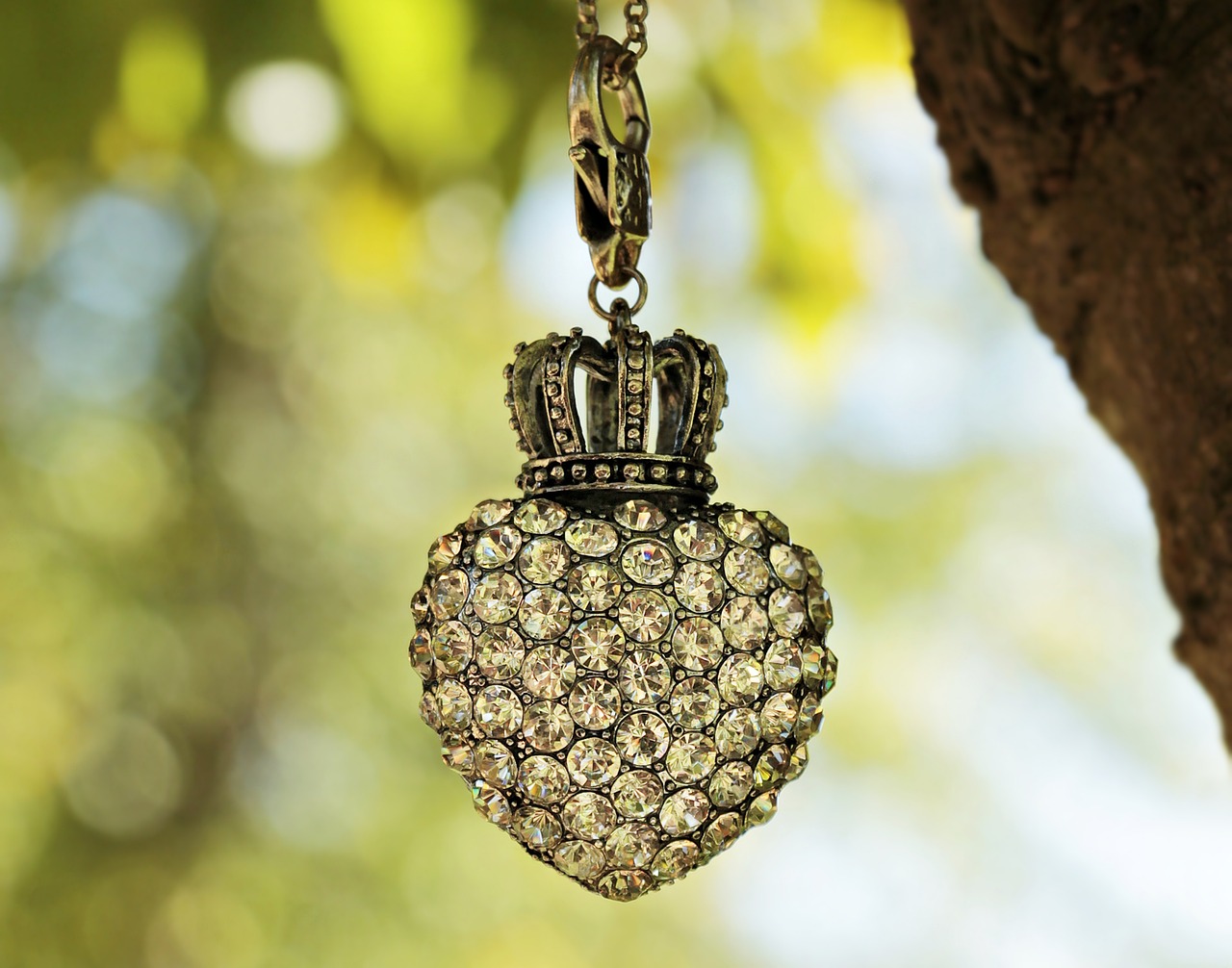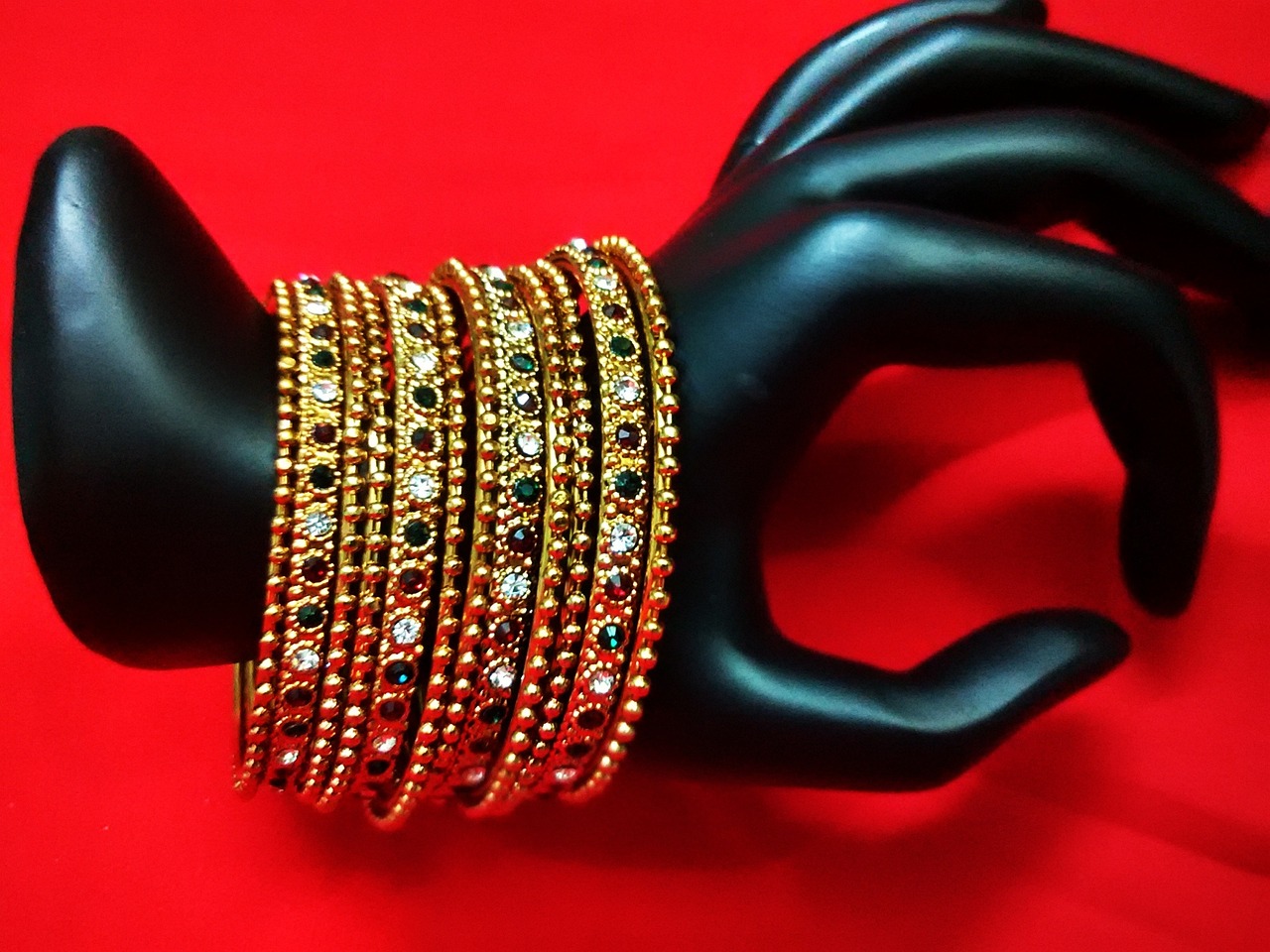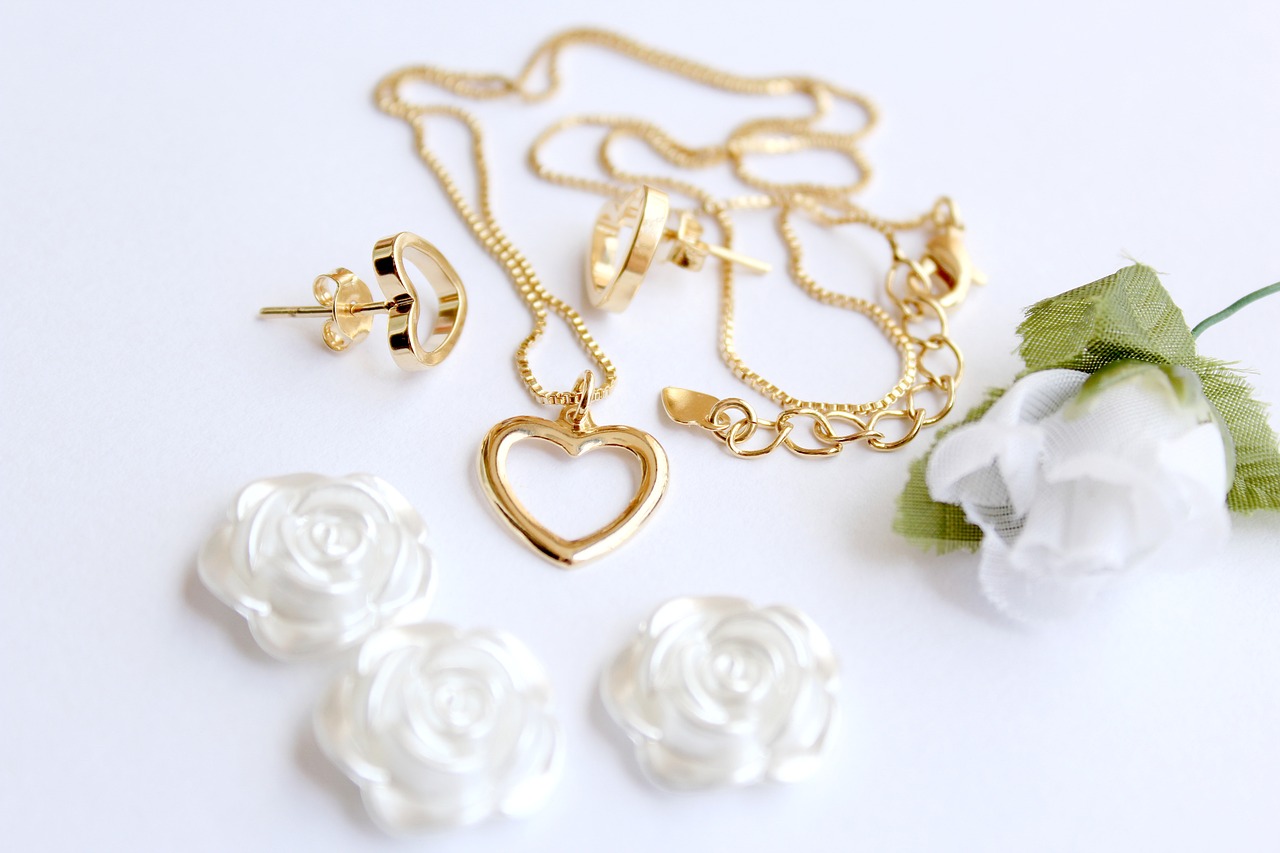This article aims to equip beginners with essential knowledge and tips for making informed jewelry purchases, ensuring they choose pieces that are both beautiful and valuable. Understanding the intricacies of jewelry shopping can transform your experience, helping you select items that not only reflect your personal style but also serve as worthwhile investments.
Before diving into the world of jewelry, it’s important to consider several key factors:
- Budget: Determine how much you are willing to spend. This will help narrow down your options.
- Occasion: Are you buying for a special event, a gift, or personal use? Different occasions may call for different styles.
- Personal Style: Think about what styles resonate with you. Do you prefer classic, modern, or bohemian designs?
Jewelry is often made from various metals, each with unique characteristics:
- Gold: Available in different karats and colors, gold is a timeless choice.
- Silver: Sterling silver is popular for its affordability and beauty.
- Platinum: Known for its durability and rarity, platinum is a premium choice.
Gold jewelry comes in various karats:
- 10K: Contains 41.7% gold, making it more affordable but less pure.
- 14K: Contains 58.3% gold and is a popular choice for durability and value.
- 18K: Contains 75% gold, offering a higher purity but at a greater cost.
Gold is not just yellow! It is available in:
- Yellow Gold: Classic and traditional.
- White Gold: A modern alternative, often plated with rhodium for extra shine.
- Rose Gold: A trendy choice with a romantic hue.
To maintain the beauty of your gold pieces:
- Store them in a soft cloth to prevent scratches.
- Clean regularly with a mild soap solution and a soft brush.
- Avoid exposure to harsh chemicals that can tarnish the metal.
Sterling silver is a beloved choice due to its stunning appearance and affordability. Look for the “925” mark to ensure authenticity. Proper maintenance includes:
- Regular polishing to prevent tarnishing.
- Storing in a cool, dry place.
Gemstones add color and personality to jewelry. Familiarize yourself with popular options:
- Diamonds: Known for their brilliance and durability.
- Sapphires: Available in various colors, with blue being the most famous.
- Emeralds: Valued for their vibrant green hue and rarity.
When assessing gemstones, consider the 4Cs:
- Cut: Influences how light reflects off the stone.
- Color: The more vivid the color, the more valuable the gemstone.
- Clarity: Fewer inclusions mean higher quality.
- Carat Weight: Heavier stones are generally more valuable.
Synthetic gemstones can be an ethical and cost-effective alternative. They offer the same visual appeal as natural stones but at a fraction of the price. Consider their pros and cons:
- Pros: More affordable, ethically sourced, and often more durable.
- Cons: May lack the unique character of natural stones.
Certification is vital for ensuring the quality and authenticity of your jewelry. Look for certificates from reputable organizations, as these can protect your investment.
Quality craftsmanship is essential for longevity. Look for:
- Secure settings for gemstones.
- Smooth finishes and consistent metalwork.
- Attention to detail in design and assembly.
Choosing the right retailer can enhance your shopping experience. Consider:
- Online Stores: Convenient but ensure they have good return policies.
- Brick-and-Mortar Stores: Allow you to see and try on pieces.
Second-hand jewelry can offer unique finds at lower prices. Assess the quality and value by:
- Checking for certification and authenticity.
- Inspecting for any damage or wear.
Avoid pitfalls such as:
- Impulse buying without research.
- Overlooking the importance of certification.
Establishing a budget is crucial. Allocate funds wisely to ensure you make informed decisions while staying within your means.
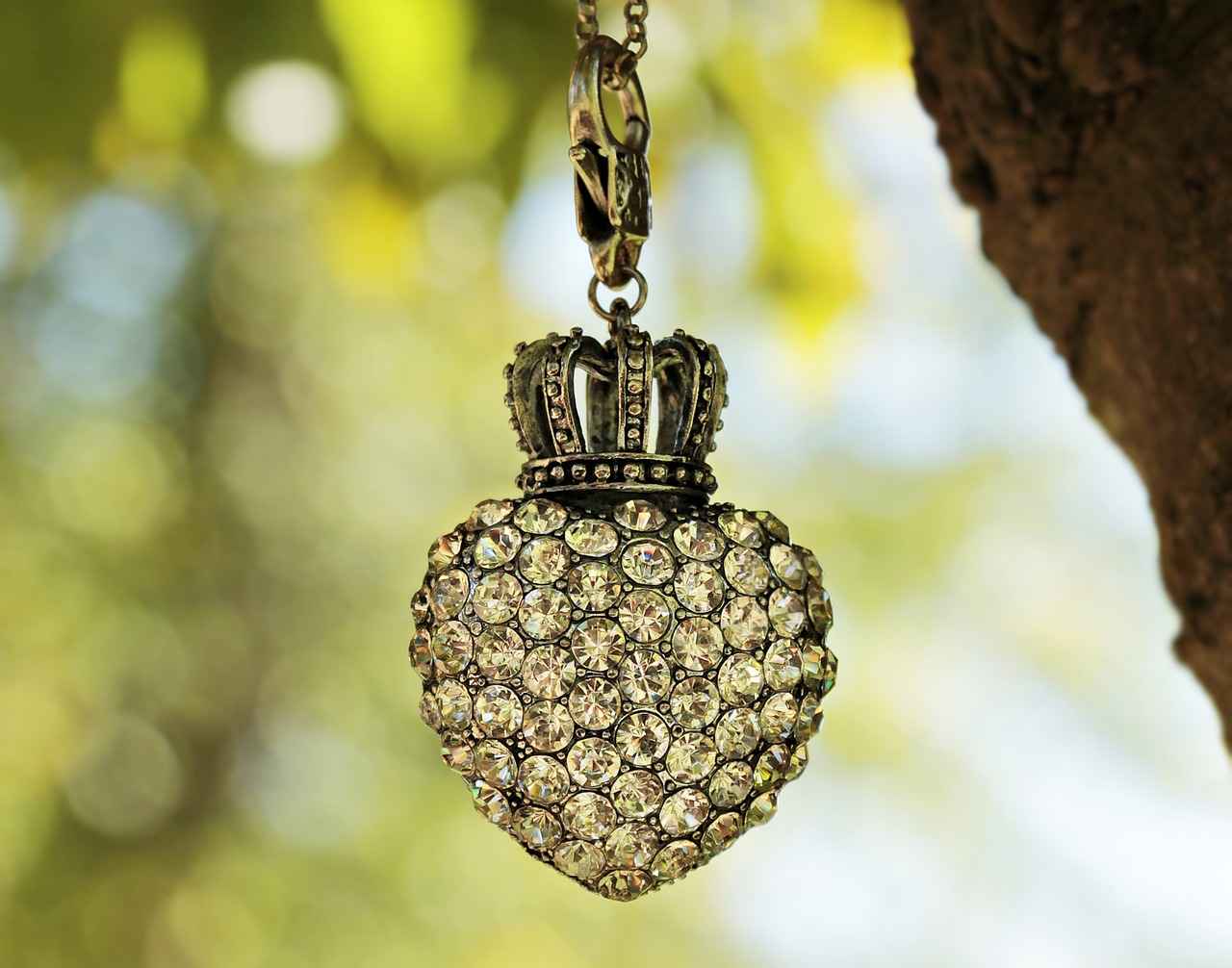
What Should You Consider Before Buying Jewelry?
When it comes to purchasing jewelry, making informed decisions is essential. Understanding key factors such as budget, occasion, and personal style can significantly enhance your shopping experience. This foundational knowledge not only helps narrow down options but also ensures that you are satisfied with your final choice.
Establishing a budget is the first step in any jewelry purchase. It helps you focus on pieces that are within your financial means and prevents overspending. Consider the following:
- Set a Realistic Budget: Determine how much you can comfortably spend without straining your finances.
- Factor in Additional Costs: Remember to include costs for maintenance, insurance, and potential resizing.
- Be Aware of Sales: Look for seasonal sales or promotions that can help you get more value for your money.
The occasion for which you are buying jewelry can greatly influence your selection. Different events call for different styles:
- Weddings: Consider elegant pieces like diamond rings or pearl necklaces.
- Anniversaries: Personalized jewelry or items with significant stones can make memorable gifts.
- Everyday Wear: Opt for versatile and durable pieces that can be worn regularly without worry.
Your personal style should be a guiding factor in your jewelry choices. Here are some tips to help you identify what suits you best:
- Know Your Aesthetic: Whether you prefer classic, modern, or bohemian styles, choose pieces that reflect your personality.
- Consider Your Wardrobe: Select jewelry that complements your existing clothing and accessories.
- Experiment: Don’t be afraid to try different styles and materials to discover what you truly love.
Combining these three factors can streamline your shopping process. Start by setting your budget, then identify the occasion and your personal style. This approach helps you make focused decisions and enhances the likelihood of satisfaction with your purchase. For example, if you’re attending a formal event, you might allocate a higher budget for a statement piece that aligns with your sophisticated style.
Ultimately, being well-informed about your budget, the occasion, and your personal style will empower you to make choices that are not only aesthetically pleasing but also financially sound. Investing time in understanding these elements will lead to a more enjoyable shopping experience and ensure you choose jewelry that you will cherish for years to come.
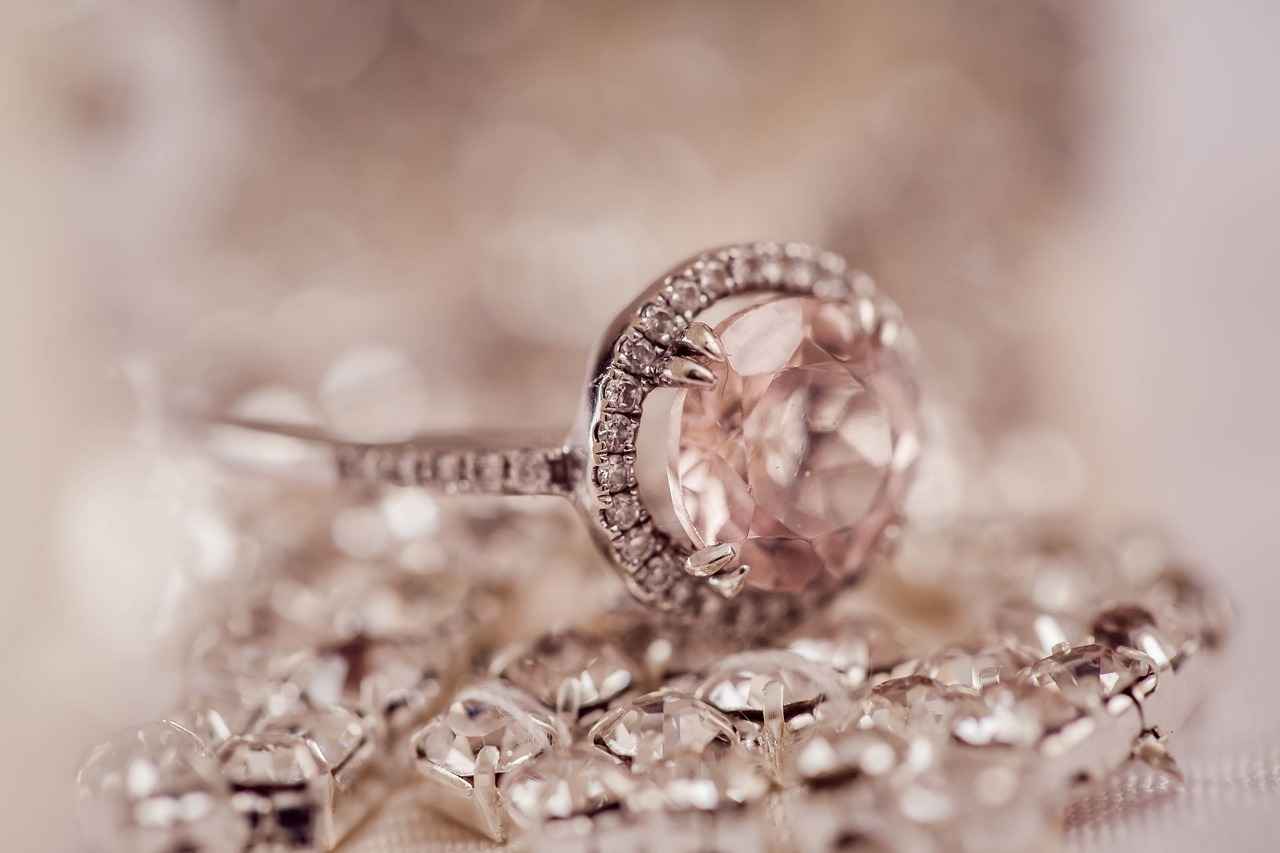
How to Choose the Right Metal for Your Jewelry?
When it comes to jewelry shopping, one of the most critical decisions is selecting the right metal. Different metals not only influence the durability and aesthetics of the piece but also play a significant role in the overall cost. Understanding the characteristics of various metals such as gold, silver, and platinum can greatly enhance your shopping experience and ensure you make informed choices.
Each metal has its unique properties that cater to different preferences and needs. Here’s a breakdown of some popular options:
- Gold: Known for its timeless appeal, gold is available in various karats, including 10K, 14K, and 18K. The karat indicates the purity of the gold, with higher karats meaning more gold content. Additionally, gold comes in different colors, including yellow, white, and rose, each offering a distinct aesthetic.
- Silver: Sterling silver is a favored choice due to its affordability and beauty. It is composed of 92.5% silver and 7.5% other metals, usually copper, which adds strength. While it may tarnish over time, proper care can keep it looking shiny.
- Platinum: This metal is known for its durability and resistance to tarnishing, making it an excellent choice for engagement rings and fine jewelry. Although it is more expensive than gold and silver, its longevity and hypoallergenic properties make it a worthwhile investment.
The visual appeal of a metal can significantly affect your choice. For instance, if you prefer a classic look, yellow gold may be your best bet. On the other hand, if you’re drawn to modern styles, white gold or platinum might be more appealing. Consider your personal style and how the metal complements your skin tone:
- Yellow Gold: Best for warm skin tones.
- White Gold: Complements cool skin tones.
- Rose Gold: Flattering on most skin tones, offering a romantic touch.
Budget is a crucial factor in your selection process. Here’s a general comparison of metal prices:
| Metal | Price Range (per gram) |
|---|---|
| Gold | $50 – $60 |
| Silver | $0.70 – $1.00 |
| Platinum | $30 – $40 |
While gold tends to be the most expensive, silver is the most affordable option. Platinum falls in between but offers exceptional durability, making it a valuable choice.
In making your final decision, consider factors such as lifestyle, allergies, and long-term value. For instance, if you lead an active lifestyle, a durable metal like platinum might be ideal. Conversely, if you are on a budget, sterling silver can provide a beautiful yet affordable alternative.
Ultimately, the right metal for your jewelry is one that aligns with your personal style, budget, and lifestyle needs. By understanding the unique characteristics of each metal, you can confidently make a choice that you will cherish for years to come.
Gold: What You Need to Know
When it comes to purchasing jewelry, understanding the different types of gold is essential for making informed decisions. Gold jewelry is not only beautiful but also a valuable investment. The main forms of gold you will encounter are categorized by their karat content, which indicates the purity of the gold. The most common types are 10K, 14K, and 18K gold, each offering unique characteristics that can significantly influence your purchase.
- 10K Gold: This type contains 41.7% pure gold and is the least expensive option. It is more durable due to the higher percentage of alloy metals, making it a good choice for everyday wear.
- 14K Gold: Comprising 58.3% pure gold, 14K gold strikes a balance between quality and affordability. It is popular for engagement rings and fine jewelry, offering a good mix of durability and value.
- 18K Gold: With 75% pure gold, 18K gold is often favored for its rich color and luster. It is softer than 10K and 14K, which means it may require more care to avoid scratches and dents.
The karat of gold significantly impacts the price, durability, and appearance of jewelry. Higher karats mean more gold content, which generally leads to a higher price. However, higher karat gold can also be softer and less durable, making it more prone to damage. Therefore, understanding your lifestyle and how you plan to wear the jewelry is crucial.
Gold is available in several colors, including yellow, white, and rose. Each color is created by mixing pure gold with different metals:
- Yellow Gold: The classic choice, yellow gold retains its natural color and is often associated with traditional jewelry.
- White Gold: This type is created by alloying gold with metals like palladium or nickel, giving it a sleek, modern appearance.
- Rose Gold: Known for its romantic hue, rose gold is made by mixing gold with copper, resulting in a unique pinkish tint.
When selecting gold jewelry, consider your personal style, the occasion, and your budget. If you prefer a classic look, yellow gold may be the way to go. For a contemporary style, white gold or rose gold could be more appealing. Additionally, think about the design and craftsmanship of the piece, as well as any gemstones or embellishments that may enhance its beauty.
Proper maintenance is vital for preserving the quality and appearance of gold jewelry. Regular cleaning with a soft cloth can help remove dirt and oils. Avoid exposing your gold pieces to harsh chemicals, and store them separately to prevent scratching. If your jewelry becomes tarnished, consider professional cleaning to restore its shine.
In conclusion, understanding the differences between 10K, 14K, and 18K gold, along with the various colors and care techniques, can empower you to make informed choices when purchasing gold jewelry. By considering these factors, you can ensure that your investment is both beautiful and lasting.
What Are the Different Colors of Gold?
When it comes to gold jewelry, the variety of colors available can be both exciting and overwhelming for shoppers. Understanding the differences among these colors is essential for making a choice that aligns with your personal style and preferences.
Gold is predominantly available in three main colors: yellow, white, and rose. Each color has its own unique properties and aesthetic appeal, catering to diverse tastes and styles. Let’s delve into each type:
- Yellow Gold: This classic color is the most traditional and is often associated with luxury and wealth. Yellow gold is made by alloying pure gold with metals like copper and zinc, which enhances its durability. It complements warm skin tones beautifully and is often favored for engagement rings and heirloom pieces.
- White Gold: Known for its modern and elegant appearance, white gold is created by alloying gold with metals such as palladium or nickel. This gives it a silvery sheen that resembles platinum but at a more affordable price. White gold is an excellent choice for those who prefer a contemporary style and works well with various gemstones.
- Rose Gold: This trendy color has surged in popularity over the past few years. Rose gold is created by mixing gold with copper, resulting in a warm, pinkish hue. Its romantic tone makes it a popular choice for wedding bands and fashion jewelry, appealing to those who want a unique twist on traditional gold.
When selecting the right color of gold, consider your skin tone and personal style. Yellow gold tends to suit those with warm undertones, while white gold is often more flattering for cooler skin tones. Rose gold, with its rosy hue, can complement a variety of skin tones and adds a touch of modern flair.
| Gold Color | Benefits |
|---|---|
| Yellow Gold | Timeless appeal, classic look, enhances warm skin tones. |
| White Gold | Modern elegance, versatile with various gemstones, durable. |
| Rose Gold | Trendy and romantic, unique appearance, suits various styles. |
Caring for your gold jewelry is essential to maintain its beauty and luster. Here are some tips:
- Yellow Gold: Clean with a mild soap and warm water solution. Avoid harsh chemicals that can damage the finish.
- White Gold: Regularly polish with a soft cloth to maintain its shine. Be cautious of exposure to chlorine, which can cause discoloration.
- Rose Gold: Similar to yellow gold, use a soft cloth for cleaning. Store it separately to prevent scratches from other jewelry.
Choosing the right color of gold jewelry is not only about aesthetics but also about how it resonates with your personal style and complements your skin tone. Whether you prefer the timeless elegance of yellow gold, the modern appeal of white gold, or the romantic charm of rose gold, understanding these options can help you make a more informed decision.
How to Care for Gold Jewelry?
Gold jewelry is not just a fashion statement; it is often a cherished investment that can hold sentimental value. To ensure that your gold pieces remain beautiful and last for generations, proper care is essential. Here are some effective tips to help maintain the shine and integrity of your gold jewelry over time.
Gold jewelry can tarnish and lose its luster if not cared for properly. Regular maintenance not only enhances its appearance but also helps to prevent costly repairs or replacements. By following a few simple guidelines, you can keep your jewelry looking as good as new.
- Gentle Cleaning Solution: Mix a few drops of mild dish soap with warm water. Soak your gold jewelry for about 15 minutes.
- Soft Brush: Use a soft-bristled toothbrush to gently scrub intricate designs. This helps remove dirt and grime without scratching the surface.
- Rinse and Dry: Rinse your jewelry under lukewarm water and dry it with a soft, lint-free cloth.
Proper storage can prevent scratches and tangles. Here are some effective storage tips:
- Use a Jewelry Box: Store your gold jewelry in a dedicated jewelry box with compartments to keep each piece separate.
- Anti-Tarnish Pouches: Consider using anti-tarnish pouches or cloths to help prevent oxidation and tarnishing.
- Avoid Exposure: Keep your jewelry away from harsh chemicals, perfumes, and lotions that can cause damage.
While regular cleaning at home is beneficial, professional cleaning is recommended at least once a year. Jewelers have specialized tools and solutions that can restore your gold jewelry’s brilliance and remove stubborn tarnish.
To maintain the quality of your gold jewelry, it’s essential to avoid certain practices:
- Avoid Abrasives: Never use abrasive cleaners or rough cloths, as they can scratch the surface.
- Limit Exposure: Remove your jewelry before swimming, exercising, or engaging in activities that could lead to damage.
- Don’t Overclean: Excessive cleaning can wear down the gold over time, so limit your cleaning routine to when necessary.
With the right care and attention, your gold jewelry can remain a stunning accessory for years to come. By implementing these cleaning and storage tips, you can ensure that your pieces retain their value and beauty. Remember, a little effort goes a long way in preserving your precious items.
Silver Jewelry: A Comprehensive Overview
Silver jewelry has long been cherished for its elegance and affordability. Among the various types of silver, sterling silver stands out as the most popular choice for jewelry enthusiasts. Understanding how to identify genuine silver and maintain its luster can significantly enhance your shopping experience.
Sterling silver is an alloy composed of 92.5% pure silver and 7.5% other metals, typically copper. This combination not only enhances its durability but also makes it suitable for crafting intricate designs. The hallmark “925” is a common indicator of sterling silver, ensuring that you are purchasing a quality product.
- Look for Hallmarks: Genuine sterling silver will often have a stamp indicating its purity, such as “925”.
- Magnet Test: Silver is not magnetic. If your jewelry is attracted to a magnet, it is likely not genuine silver.
- Color and Luster: Authentic silver has a bright, shiny appearance. If it looks dull or has a yellowish tint, it may be a lower quality metal.
Proper maintenance is essential to keep your silver jewelry looking its best. Here are some practical tips:
1. Regular Cleaning: Use a soft cloth to gently wipe your jewelry after wearing it to remove oils and dirt.2. Storage: Keep your silver pieces in a cool, dry place, preferably in a tarnish-resistant cloth or box.3. Avoid Chemicals: Stay away from harsh cleaning agents, perfumes, and lotions that can tarnish silver.4. Polishing: Use a silver polish cloth for deeper cleaning when necessary.
Silver jewelry offers numerous advantages:
- Affordability: Compared to gold and platinum, silver is significantly more budget-friendly.
- Versatility: Silver complements a wide range of styles, making it suitable for both casual and formal occasions.
- Hypoallergenic Properties: Sterling silver is generally safe for sensitive skin, reducing the risk of allergic reactions.
While silver jewelry may not appreciate in value like gold, it can still be a worthwhile investment. The intrinsic value of silver, combined with the craftsmanship of the jewelry, can offer a good return if well maintained. Additionally, unique or designer pieces can become collectible over time.
When shopping for silver jewelry, consider the following:
- Reputable Jewelers: Purchase from established jewelers who provide certification and clear information about their products.
- Online Retailers: Ensure they have good reviews and return policies, and look for detailed descriptions of the items.
- Craft Fairs and Artisan Markets: These venues often feature unique designs and direct access to the creators.
In summary, understanding the characteristics of silver jewelry, how to identify genuine pieces, and proper maintenance can greatly enhance your experience. Armed with knowledge, you can make informed decisions that reflect your personal style and budget.

What Are the Different Types of Gemstones?
Gemstones are not just beautiful; they are also significant in terms of meaning and value. When you explore the world of gemstones, you uncover a vast array of colors, shapes, and types, each with its own unique properties. Understanding these different types can help you make informed decisions when purchasing jewelry.
Gemstones can be classified into two main categories: precious and semi-precious. Precious gemstones, including diamonds, rubies, sapphires, and emeralds, are highly valued for their rarity and beauty. Semi-precious stones, such as amethyst, topaz, and aquamarine, are more abundant but still offer stunning aesthetics and charm.
Here’s a deeper look into some of the most popular gemstones:
- Diamonds: Known for their unmatched brilliance and hardness, diamonds are often associated with love and commitment. The 4Cs—cut, color, clarity, and carat weight—play a crucial role in determining their quality.
- Sapphires: Available in a variety of colors, sapphires are treasured for their durability and rich hues. Blue sapphires are particularly sought after, symbolizing wisdom and nobility.
- Emeralds: Renowned for their vibrant green color, emeralds are often linked to fertility and rebirth. Their value is influenced by color saturation and the presence of inclusions.
- Rubies: With their deep red color, rubies are associated with passion and vitality. The finest rubies command high prices due to their rarity and intense color.
- Amethyst: A popular semi-precious stone, amethyst is known for its beautiful purple color and is believed to promote calmness and clarity.
- Topaz: This stone comes in a variety of colors, including blue, yellow, and pink. Topaz is often associated with love and affection.
- Aquamarine: With its serene blue color, aquamarine is thought to bring peace and tranquility. It is a popular choice for March birthdays.
When choosing a gemstone, it’s essential to consider not only its beauty but also its symbolism and significance. Each stone carries its own lore and meaning, which can enhance the emotional value of your jewelry.
To ensure you’re making a wise investment, understanding the 4Cs is crucial. The cut impacts how light interacts with the stone, while color refers to the hue and saturation. Clarity measures the presence of internal or external flaws, and carat weight indicates the size. Evaluating these factors will help you select high-quality gemstones that not only look stunning but also retain their value over time.
Synthetic gemstones are created in laboratories and can offer a more affordable and ethical alternative to natural stones. While they may lack the rarity of their natural counterparts, they are often visually identical and can be a smart choice for budget-conscious buyers. However, understanding the differences in value and market perception is essential when considering synthetic options.
In conclusion, being knowledgeable about the different types of gemstones and their qualities can significantly enhance your jewelry shopping experience. Whether you’re searching for a timeless piece or a trendy accessory, informed choices will lead to satisfying purchases that reflect your personal style.
How to Evaluate Gemstone Quality?
When it comes to purchasing jewelry, particularly those adorned with gemstones, understanding how to evaluate gemstone quality is crucial. By focusing on the 4Cs—cut, color, clarity, and carat weight—you can make informed decisions that not only enhance your jewelry collection but also ensure that your investment holds its value over time.
The cut of a gemstone refers to how well it has been shaped and faceted. This aspect significantly affects the stone’s brilliance and overall appearance. A well-cut gemstone reflects light beautifully, enhancing its sparkle and visual appeal. When evaluating a gemstone, look for those that exhibit a precise cut, as this will maximize its potential. Poorly cut stones may appear dull, regardless of their color or clarity.
Color is one of the most critical factors in determining a gemstone’s quality. For colored stones, the ideal hue is often vibrant and evenly distributed. In diamonds, color grading ranges from colorless to shades of yellow or brown, with colorless stones generally fetching higher prices. When assessing color, consider factors such as hue, tone, and saturation. A gemstone with a rich, vivid color will typically be more valuable than one that appears washed out.
Clarity refers to the presence of internal or external flaws, known as inclusions and blemishes, respectively. The fewer imperfections a gemstone has, the higher its clarity grade and value. While some inclusions can be seen with the naked eye, others may require magnification to detect. Remember, a flawless gemstone is rare and often comes at a premium. However, some buyers appreciate the unique character that inclusions can add to a stone.
Carat weight measures the size of a gemstone, with one carat equivalent to 0.2 grams. While larger stones can be more valuable, the price does not increase linearly with carat weight. This means that a 2-carat diamond may not simply be double the price of a 1-carat diamond; factors like cut, color, and clarity also play significant roles in the overall valuation. When considering carat weight, be mindful of how it interacts with the other 3Cs.
To effectively evaluate a gemstone’s quality, it’s essential to take a holistic approach. Start by examining each of the 4Cs individually, but also consider how they work together to influence the stone’s overall appeal and value. A gemstone with an excellent cut and vibrant color may still be a poor investment if it has low clarity or is overly large without the necessary quality attributes.
In addition to the 4Cs, consider the gemstone’s origin, treatment history, and certification. Some gemstones may undergo treatments to enhance their color or clarity, which can affect their value. Always seek stones that come with reliable certification to ensure authenticity and quality. Reputable grading organizations provide certificates that detail the gemstone’s characteristics, offering peace of mind in your purchase.
Understanding how to evaluate gemstone quality using the 4Cs is essential for anyone looking to invest in jewelry. This knowledge empowers you to choose stunning pieces that not only meet your aesthetic desires but also serve as valuable assets.
Are Synthetic Gemstones a Good Option?
When it comes to choosing gemstones for your jewelry, the debate between natural and synthetic options is becoming increasingly relevant. Synthetic gemstones offer a range of benefits, including affordability and ethical considerations, making them an attractive choice for many consumers. However, understanding the implications of these alternatives is crucial for making an informed decision.
Synthetic gemstones are man-made stones that replicate the chemical, physical, and optical properties of natural gemstones. They are created in controlled environments using advanced technology, resulting in stones that are often indistinguishable from their natural counterparts. Some well-known synthetic gemstones include moissanite, cubic zirconia, and synthetic sapphires.
One of the most compelling reasons to consider synthetic gemstones is their affordability. Natural gemstones can be significantly more expensive due to their rarity and the costs associated with mining. In contrast, synthetic options are produced in labs, which reduces the costs associated with extraction and transportation. This allows consumers to purchase larger or higher-quality stones without breaking the bank.
In today’s market, ethical sourcing is a growing concern for many buyers. Synthetic gemstones provide a way to avoid the ethical dilemmas often associated with mining practices, such as environmental degradation and labor exploitation. By choosing synthetic options, consumers can feel confident that their purchase does not contribute to these issues.
- Pros:
- Cost-effective: Generally more affordable than natural stones.
- Ethically sourced: No environmental or labor concerns linked to mining.
- Consistent quality: Lab-created stones can be produced with fewer flaws.
- Cons:
- Perceived value: Some traditionalists may view synthetic stones as less valuable.
- Resale value: Synthetic gemstones may not hold their value as well as natural stones.
When considering synthetic gemstones for your jewelry, it’s essential to evaluate your personal preferences and values. Ask yourself:
- Are you looking for a budget-friendly option?
- Do ethical sourcing and environmental concerns matter to you?
- Are you comfortable with the idea of owning a lab-created stone?
By answering these questions, you can determine if synthetic gemstones align with your jewelry needs and personal ethics.
Synthetic gemstones present a viable alternative to natural stones, offering affordability and ethical benefits. While they may not carry the same prestige as their natural counterparts, their appeal lies in their accessibility and responsible sourcing. As you navigate your jewelry shopping journey, consider what matters most to you and how synthetic gemstones may fit into your collection.
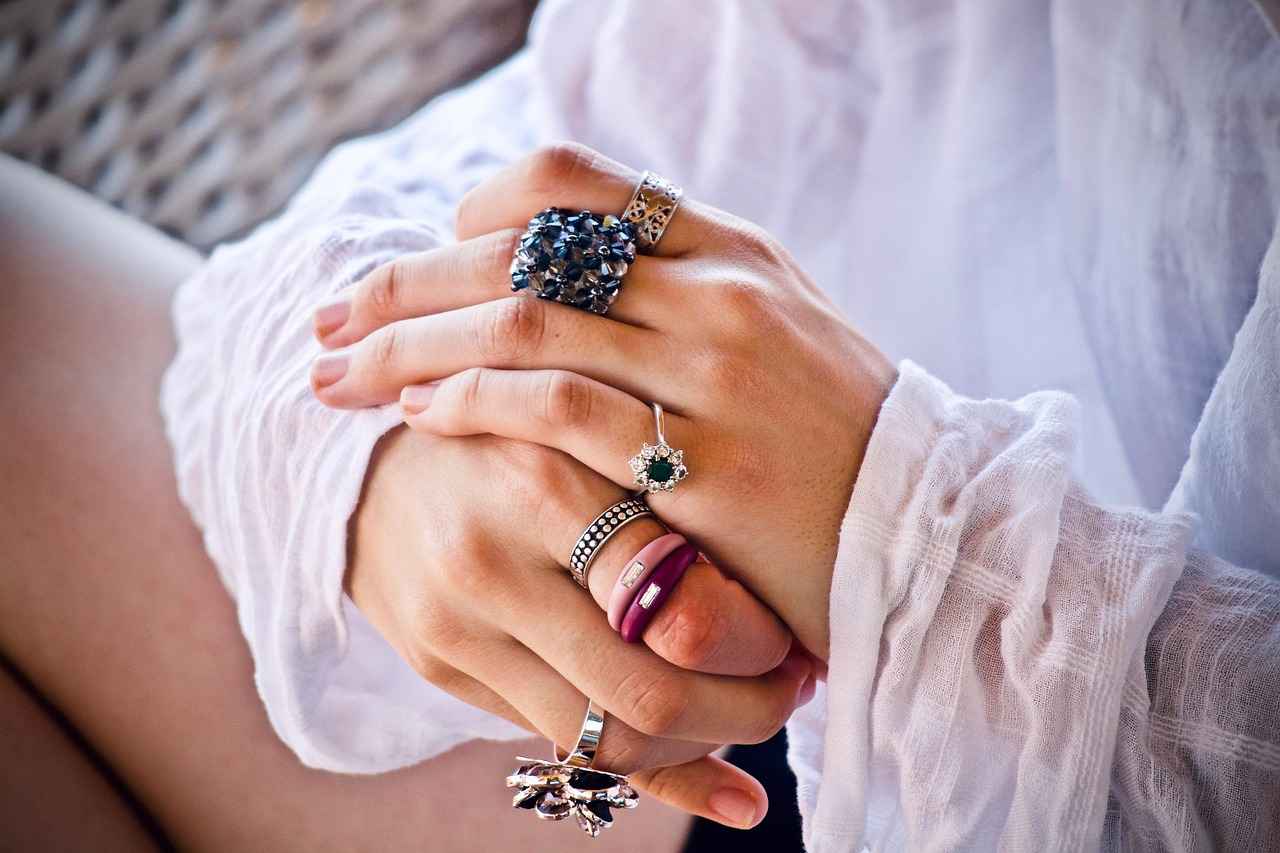
What Should You Know About Jewelry Certification?
Understanding jewelry certification is essential for anyone looking to invest in fine jewelry. Certification serves as a guarantee of quality and authenticity, providing peace of mind for buyers. When purchasing valuable pieces, it’s crucial to recognize the significance of certificates issued by reputable organizations.
Jewelry certification is the process by which a piece is evaluated and authenticated by a qualified gemological laboratory or organization. These certifications typically include detailed reports on the quality, characteristics, and authenticity of the materials used, such as gemstones and metals.
- Assurance of Quality: Certified jewelry is evaluated by experts, ensuring that the materials meet specific standards. This reduces the risk of purchasing inferior or fake items.
- Protection of Investment: Fine jewelry can represent a significant financial investment. Certification helps protect this investment by confirming the authenticity and value of the piece.
- Resale Value: When it comes time to sell, having a certification can greatly enhance the resale value of your jewelry. Buyers are more likely to trust and pay a premium for certified pieces.
- Educational Insight: Certificates often provide detailed information about the jewelry, including the quality of gemstones (cut, color, clarity, and carat weight) and the metal’s purity. This knowledge empowers buyers to make informed decisions.
Not all certifications are created equal. Here are some tips to ensure that the certification you receive is legitimate:
1. Check the issuing laboratory's reputation.2. Look for recognized organizations, such as GIA (Gemological Institute of America) or AGS (American Gem Society).3. Ensure the certificate includes a detailed description of the piece.4. Verify the certificate number with the issuing organization.
There are various types of certifications available, each serving a specific purpose:
- Gemstone Certification: This certifies the quality and authenticity of gemstones, providing insights into their characteristics.
- Metal Certification: This confirms the purity and quality of the metal used in the jewelry, such as gold or platinum.
- Appraisal Certificates: These documents assess the value of the jewelry, which can be essential for insurance purposes.
When examining a certification, consider the following key elements:
- Detailed Description: The certificate should provide a comprehensive description of the jewelry, including dimensions, weight, and specific characteristics.
- Certification Number: A unique number that allows you to verify the authenticity of the certificate with the issuing organization.
- Laboratory Information: The name and contact details of the laboratory that issued the certification should be clearly stated.
In conclusion, understanding jewelry certification is vital for making informed purchasing decisions. It not only assures quality and authenticity but also protects your investment. By familiarizing yourself with the certification process and knowing what to look for, you can shop with confidence and enjoy your fine jewelry for years to come.
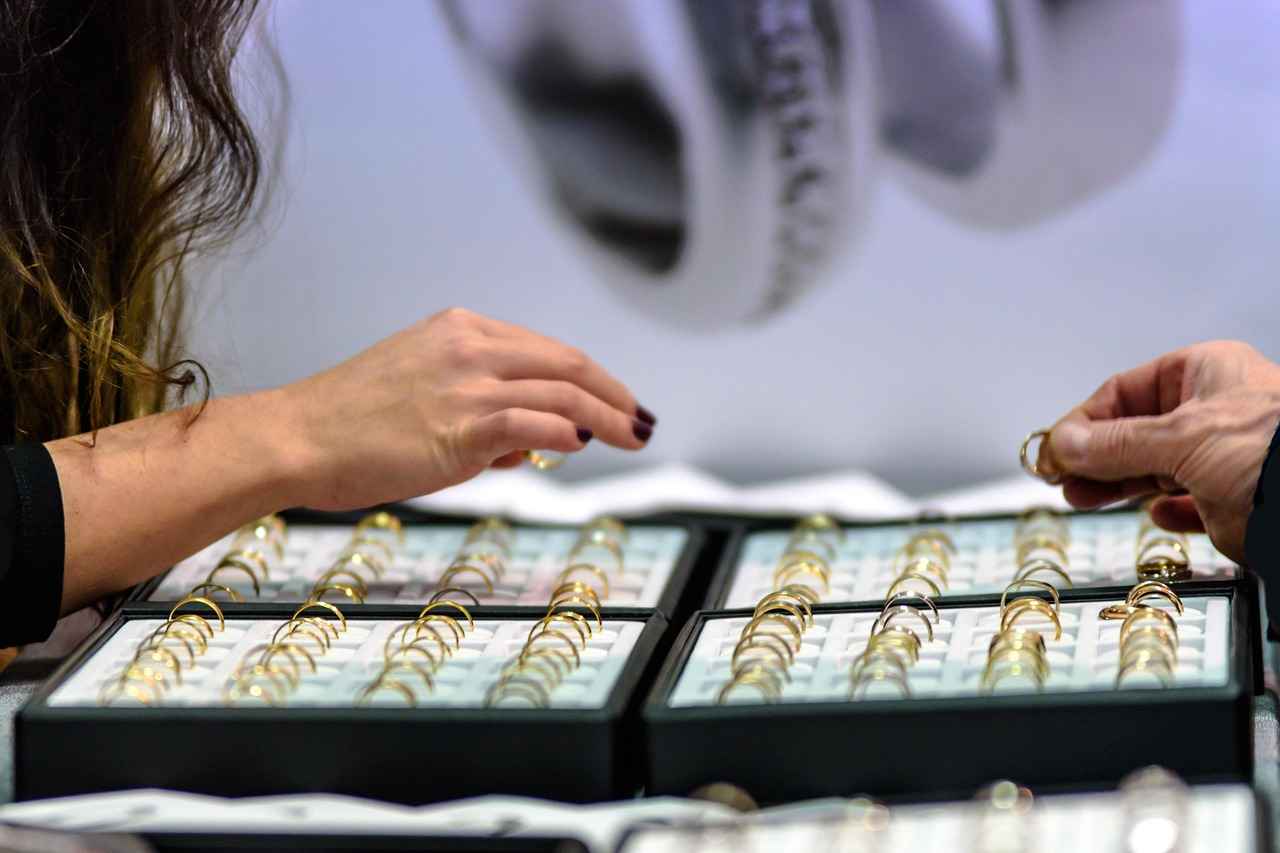
How to Spot Quality Craftsmanship in Jewelry?
When it comes to purchasing jewelry, understanding the quality craftsmanship behind each piece is essential. High-quality jewelry not only enhances your appearance but also serves as a lasting investment. In this guide, we will explore the key indicators of exceptional craftsmanship that can help you make informed decisions when shopping for jewelry.
- Examine the Materials Used: The foundation of any jewelry piece lies in its materials. Look for solid metals such as 14K or 18K gold, sterling silver, or platinum. Avoid items that are plated or filled, as they may wear out quickly.
- Inspect the Setting: The way gemstones are set can indicate the quality of craftsmanship. High-quality settings should be secure and well-aligned. Look for prong settings that hold stones firmly without wobbling, and ensure that the metal is smooth and free of sharp edges.
- Check for Hallmarks: Authentic jewelry often bears a hallmark or stamp indicating the metal’s purity and the manufacturer’s mark. This serves as a guarantee of quality and can help you verify the authenticity of a piece.
- Look for Attention to Detail: Quality craftsmanship is evident in the small details. Examine the finish of the piece; it should be polished and smooth without any scratches or tarnishes. Intricate designs should be executed flawlessly, showcasing the skill of the artisan.
- Evaluate the Weight: Heavier pieces often indicate solid materials rather than hollow or flimsy constructions. While weight is not the sole indicator of quality, it can provide insight into the integrity of the jewelry.
Why Is Quality Craftsmanship Important?
Investing in well-crafted jewelry ensures that your pieces will stand the test of time. Subpar items may look appealing initially but can deteriorate quickly, leading to disappointment. Quality craftsmanship not only enhances the aesthetic appeal but also contributes to the durability of the jewelry. Well-made pieces are less likely to break or lose stones, making them a wise investment for any jewelry collection.
How to Educate Yourself on Craftsmanship?
Before making a purchase, it’s beneficial to educate yourself about different jewelry styles and techniques. Consider the following:
- Research Jewelry Types: Familiarize yourself with various types of jewelry, including rings, necklaces, and bracelets. Understanding the common craftsmanship techniques used in each can help you identify quality.
- Consult Experts: Don’t hesitate to ask questions from jewelers or gemologists. Their expertise can provide valuable insights into what to look for in quality craftsmanship.
- Read Reviews: Online reviews and testimonials can offer firsthand accounts of others’ experiences with specific jewelers or pieces. Look for patterns in feedback regarding quality and craftsmanship.
In conclusion, spotting quality craftsmanship in jewelry is a skill that can be developed over time. By paying attention to the materials, settings, and details, you can ensure that your jewelry purchases are not only beautiful but also enduring.

What Are the Best Places to Buy Jewelry?
When it comes to purchasing jewelry, selecting the right retailer is crucial for a satisfying shopping experience. The decision between online and brick-and-mortar stores can significantly impact your overall satisfaction and the quality of your purchase.
- Convenience: Shopping online allows you to browse a vast selection of jewelry from the comfort of your home, eliminating the need to travel.
- Variety: Online retailers often have a broader range of styles, designs, and price points compared to local stores.
- Price Comparisons: It’s easier to compare prices across various websites, helping you find the best deals.
- Customer Reviews: Online platforms usually feature customer feedback, providing insights into product quality and seller reliability.
- Lack of Physical Inspection: You cannot physically examine the jewelry, which may lead to discrepancies in expectations versus reality.
- Shipping Risks: There is always a risk of damage during shipping, and returns can be cumbersome.
- Delayed Gratification: Unlike in-store purchases, online shopping requires waiting for delivery, which can be frustrating.
- Immediate Gratification: You can take your jewelry home immediately after purchase, which is satisfying for many shoppers.
- Personal Interaction: Sales associates can provide personalized advice and insights, enhancing your shopping experience.
- Physical Inspection: You can see and try on the jewelry, ensuring it meets your expectations in terms of size, weight, and quality.
- Limited Selection: Local stores may have a smaller inventory compared to online retailers.
- Higher Prices: Brick-and-mortar shops often have higher overhead costs, which can lead to increased prices for consumers.
- Time Constraints: You may need to work around store hours, which can be inconvenient for busy schedules.
The choice between online and physical stores ultimately depends on your personal preferences and needs. Consider the following:
- Your Comfort Level: Are you comfortable making significant purchases online, or do you prefer the traditional shopping experience?
- Specific Needs: Are you looking for something unique that may only be available at a local jeweler?
- Research: Have you done enough research on both options to make an informed decision?
In summary, whether you choose to shop online or at a brick-and-mortar store, understanding the pros and cons of each can help you make an informed decision. Ultimately, the right choice will enhance your jewelry shopping experience and ensure you find the perfect piece.
Should You Consider Second-Hand Jewelry?
When it comes to jewelry shopping, many people often overlook the potential of second-hand jewelry. This category of jewelry not only offers unique pieces but also comes at significantly lower prices compared to new items. In this section, we will explore the benefits of buying pre-owned jewelry, how to assess its quality, and tips for making smart purchases.
One of the primary advantages of second-hand jewelry is the affordability. Many individuals are surprised to find that they can acquire stunning pieces without breaking the bank. This is particularly beneficial for those on a budget or for those looking to purchase higher-quality items that may be out of reach when bought new.
Second-hand pieces often come with a history and story that new jewelry lacks. Each item has its own narrative, making it not just an accessory but a conversation starter. Moreover, vintage and antique jewelry can offer distinctive designs that reflect the trends of different eras, adding character to your collection.
- Examine the Materials: Always check the metal type and gemstone quality. Look for stamps indicating the metal’s purity, such as 14K or 18K for gold.
- Inspect for Damage: Carefully examine the piece for any signs of wear and tear, such as scratches, loose stones, or broken clasps.
- Request Documentation: If available, ask for any certificates or appraisals that can verify the authenticity and value of the item.
There are numerous places to explore when searching for second-hand jewelry. Local thrift stores, estate sales, and online marketplaces like eBay or specialized vintage jewelry sites can yield fantastic finds. Additionally, reputable jewelers often have a selection of pre-owned items that have been thoroughly inspected and restored.
- Impulse Buying: Take your time to research and consider your options before making a purchase.
- Lack of Research: Familiarize yourself with the market value of the item you are interested in to avoid overpaying.
- Ignoring Return Policies: Always check the return policy in case the item does not meet your expectations.
Don’t hesitate to negotiate the price when buying second-hand jewelry. Many sellers expect some level of bargaining, especially in private sales. Do your homework to understand the fair market value of the piece, and use that information to make a reasonable offer.
In conclusion, considering second-hand jewelry can be a rewarding experience, offering both value and uniqueness. By knowing how to assess quality, where to shop, and what to avoid, you can make informed decisions that enhance your jewelry collection without overspending.
How to Avoid Common Jewelry Shopping Mistakes?
When it comes to jewelry shopping, many individuals fall prey to common mistakes that can lead to regretful purchases. Being aware of pitfalls such as impulse buying and lack of research can significantly enhance your shopping experience. By learning from these mistakes, you can make wiser decisions that not only satisfy your immediate desires but also ensure you invest in quality pieces.
Impulse buying is one of the most prevalent issues faced by shoppers. The allure of a stunning piece can cloud judgment, leading to purchases that may not align with your personal style or budget. To combat this, consider implementing the following strategies:
- Set a Budget: Before you begin shopping, determine how much you can afford to spend. This will help you avoid overspending.
- Take Your Time: Allow yourself a cooling-off period. If you feel an urge to buy, wait 24 hours to see if you still want the item.
- Research: Investigate the item you are considering. Understanding its value and craftsmanship can help you make an informed decision.
Lack of research is another common mistake that can lead to poor purchases. Many buyers do not take the time to educate themselves about the types of metals, gemstones, and craftsmanship involved in jewelry making. Here’s how to enhance your research:
- Learn About Materials: Familiarize yourself with different metals and gemstones. Knowing the differences between gold karats or the quality indicators for diamonds can save you from making costly errors.
- Read Reviews: Look for feedback on both the jewelry piece and the retailer. Customer reviews can provide insights into the quality and service you can expect.
- Seek Expert Opinions: Don’t hesitate to consult with professionals or knowledgeable friends who can offer guidance.
Quality craftsmanship is essential for ensuring that your jewelry lasts. However, many shoppers overlook this aspect. Here are some tips to help you evaluate craftsmanship:
- Inspect the Details: Look for signs of quality, such as smooth finishes, secure settings for gemstones, and uniformity in design.
- Check for Hallmarks: Genuine jewelry often has hallmarks indicating the metal type and quality. Familiarize yourself with these markings.
- Ask About Warranties: A reputable jeweler often offers warranties or guarantees on their products, reflecting confidence in their craftsmanship.
Jewelry often has sentimental value, which can lead to emotional purchasing decisions. While it’s natural to want to buy something beautiful, it’s crucial to remain objective. Consider these tips:
- Evaluate the Need: Ask yourself if the piece is something you truly need or if it’s an impulse driven by emotion.
- Visualize Your Wardrobe: Think about how the piece will fit into your existing collection. Will it complement your style?
- Set a Purpose: Determine if the purchase is for a specific occasion or just a whim. This can help clarify your decision-making process.
By being mindful of these common jewelry shopping mistakes, you can enhance your overall experience and make purchases that you will cherish for years to come. Remember, knowledge is power in the world of jewelry, and taking the time to educate yourself can lead to wise investments and lasting satisfaction.

How to Budget for Your Jewelry Purchases?
When it comes to purchasing jewelry, establishing a budget is a fundamental step that cannot be overlooked. A well-planned budget not only helps you avoid overspending but also ensures that you make informed decisions that align with your financial situation. Understanding how to effectively allocate funds for different types of jewelry can significantly impact your shopping experience and the choices you make.
Budgeting for jewelry purchases is crucial for several reasons:
- Prevents Impulse Buying: Setting a budget helps you resist the temptation of purchasing items that you may not truly need or want.
- Helps Prioritize Needs: A budget allows you to prioritize which pieces of jewelry are essential for you, whether it’s for daily wear or special occasions.
- Encourages Research: With a clear budget, you are more likely to research different options, materials, and prices to find the best value.
Setting a budget for jewelry can be straightforward if you follow these steps:
- Assess Your Financial Situation: Take a close look at your finances to determine how much you can comfortably allocate for jewelry without compromising your other expenses.
- Identify Your Jewelry Needs: Consider the occasions for which you are buying jewelry. Are you looking for everyday pieces, gifts, or something special for an event?
- Research Price Ranges: Different types of jewelry come with varying price tags. Researching the average prices for the styles and materials you are interested in can help you set realistic expectations.
Once you have established your overall budget, it’s time to allocate funds for different types of jewelry:
- Everyday Jewelry: Allocate a portion of your budget for versatile pieces that can be worn daily, such as simple necklaces or stud earrings.
- Special Occasion Jewelry: Set aside funds for more extravagant pieces, like statement rings or elegant bracelets, that you may only wear on special occasions.
- Gifts: If you plan on purchasing jewelry as gifts, make sure to include a separate allocation for these purchases to avoid straining your budget.
Staying within your budget requires discipline and planning. Here are some effective tips:
- Make a Shopping List: Before heading out or browsing online, create a list of the specific pieces you want. This will help you stay focused and avoid unnecessary purchases.
- Set Price Alerts: If you are shopping online, consider setting price alerts for items you are interested in. This way, you can purchase them when they are within your budget.
- Consider Quality Over Quantity: Investing in fewer, high-quality pieces can be more beneficial than buying multiple lower-quality items that may not last.
In summary, establishing a budget for your jewelry purchases is essential for making informed and satisfying decisions. By understanding your financial situation, identifying your needs, and allocating funds wisely, you can enjoy the jewelry shopping experience without the stress of overspending. Whether you’re buying for yourself or as a gift, a well-planned budget will help you choose pieces that truly reflect your style and values.
Frequently Asked Questions
- What should I consider before buying jewelry?
Before making a purchase, think about your budget, the occasion, and your personal style. This will help you narrow down your options and make a choice you’ll love.
- How do I choose the right metal for my jewelry?
Different metals like gold, silver, and platinum have unique qualities. Consider factors like durability, appearance, and price to find the best fit for your needs.
- What are the 4Cs of gemstone quality?
The 4Cs—cut, color, clarity, and carat weight—are essential for evaluating gemstones. Understanding these factors will ensure you select high-quality stones that retain their value.
- Are synthetic gemstones a good choice?
Synthetic gemstones can be a budget-friendly and ethical alternative. Weigh the pros and cons to see if they align with your jewelry preferences.
- How can I spot quality craftsmanship in jewelry?
Look for details like even settings, smooth finishes, and secure clasps. Quality craftsmanship ensures your jewelry will last and look beautiful over time.
- Should I buy second-hand jewelry?
Buying second-hand can lead to unique finds at lower prices. Just make sure to assess the quality and authenticity before making a purchase.
- How do I budget for jewelry purchases?
Establish a clear budget by determining how much you can spend. Allocate funds for different types of jewelry to stay within your means while shopping.
